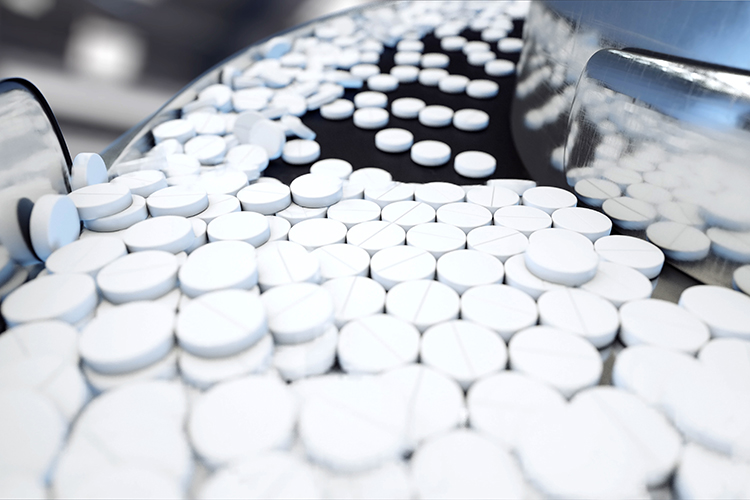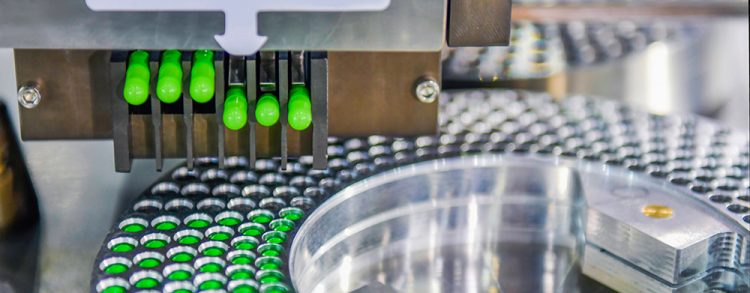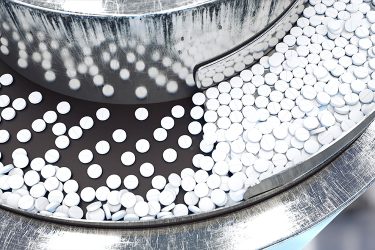Can continuous manufacturing add shareholder value for pharmaceutical companies?
Posted: 28 April 2022 | Dr Clifford Rossi (University of Maryland) | No comments yet
A recent empirical study of continuous manufacturing (CM) versus batch processing of US and non‑US pharmaceutical manufacturing facilities suggests that CM would be more economical than batch facilities, at least for the production of oral solid dosage products. This has significant consequences for policies and strategies to reduce supply chain disruptions due to pandemics, climate change or geopolitical unrest. Dr Clifford Rossi, Professor-of-the-Practice and Executive-in-Residence at the Robert H. Smith School of Business, University of Maryland, explains more.


THE COVID-19 PANDEMIC highlighted the vulnerability of global supply chain networks, including those supporting the pharmaceutical industry, to large external shocks. Labour and shipping disruptions early in the crisis left countries scrambling to secure ongoing access to critical drugs, leading to questions regarding the resilience of pharmaceutical manufacturing in the long-term as climate change and rising geopolitical tensions weigh globally.
Continuous manufacturing (CM) is an advanced technology that processes inputs and materials on a continuous basis in contrast with batch processing that is more sequential by nature. My latest empirical research suggests that the use of CM processes for facilities producing oral solid dosage (OSD) pharmaceutical products may hold the key to replacing decades-old batch technology that is more labour-intensive, less efficient and more likely to result in product defects.1 Comparisons of net present values from investing in CM versus batch manufacturing in a research study funded by the US Food and Drug Administration (FDA), provides the most comprehensive analysis to date on this issue.2 Accounting for a range of possible scenarios, the analysis demonstrates that the economics of investing in CM versus batch facilities is a winning investment strategy, but also one that can reduce disruptions in the flow of pharmaceutical products from global risk events.


To better understand the economics of CM versus batch technology, I focused on developing a simulation model of a large OSD manufacturer’s net present value (NPV) from investment in a new CM or batch facility. CM and batch capital and operating expense estimates for this facility were drawn from a seminal engineering cost study.3 Revenue estimates and other nonmanufacturing‑related expense information used in calculating the NPVs for CM and batch investment options were drawn from historical pharmaceutical manufacturing company financial statements.
Continuous manufacturing (CM) is an advanced technology that processes inputs and materials on a continuous basis in contrast with batch processing that is more sequential by nature”
The analysis generated NPVs for CM and batch technologies in the US as well as Ireland, China and India; countries with large pharmaceutical manufacturing footprints. The modelling also produced NPVs for brand and generic manufacturers. To provide a sense of the scope of the analysis, a total of 156 different combinations of US and non-US scenarios were examined and for each of these scenarios 10,000 different NPVs were generated that allowed capital and operating costs and revenues to vary. Corporate tax rates and even currency hedging costs were considered in the analysis.
Unlike most investment analyses that typically generate a few different NPV scenarios for decision‑making, the simulation approach used in this study produces an NPV distribution. The NPV distribution permits a more robust way of assessing the relative investment value of CM versus batch processing. It can compare the expected NPVs as well as more extreme negative NPV outcomes between technologies. Borrowing from the value-at‑risk (VaR) concept used extensively in commercial banking, I examined the 95th and 99th percentile worst NPVs between CM and batch options to understand how confident pharmaceutical companies could be in investing between the two manufacturing technologies. For example, if 99 percent of all 10,000 NPV scenarios for CM resulted in positive NPV, while only 95 percent of batch NPV outcomes were positive, then a manufacturer could be more confident about investing in CM than batch.


The results from the analysis were striking. First, regardless of whether the company manufactured brand or generic products, investing in CM resulted in higher NPVs than batch in nearly all scenarios. Additionally, these results hold over several sensitivity analyses that vary the capital and operating costs of CM due to inherent cost uncertainties with this technology. While the result for brand companies is not surprising, considering their generally higher profit margins, it was somewhat revealing that CM technology could be a more profitable option over batch for generic companies that tend to operate in a more highly competitive market with lower profit margins.
Since the study was largely US-focused, it analysed scenarios where investment was made in CM technology in US facilities over investment in batch processing in non-US manufacturing sites. Across the range of scenarios, considering differences in tax rates, among other factors, investment in CM in US facilities was more profitable than investing in new batch facilities in either China or India. However, even considering CM’s lower upfront and ongoing operating costs over batch, CM manufacturing in the US was not as attractive as investing in batch processing in Ireland. The combination of lower manufacturing costs and tax rates in Ireland appear to be driving these results.
More work must be conducted to understand the economic benefits from advanced technologies such as CM”
Other factors certainly weigh into the decision to invest in CM over batch. These include cost and investment uncertainty associated with CM where there has been less experience with this technology’s cost structure. There are also issues surrounding regulatory uncertainty with leveraging this technology; although in the US, the FDA has been cultivating industry interest in CM via its Emerging Technology Program, for example, to help pave the way for advanced technology development for pharmaceutical production.4
More work must be conducted to understand the economic benefits from advanced technologies such as CM; however, this research suggests that CM clearly deserves consideration in pharmaceutical plant investment decisions. Investing in domestic CM facilities, at least for US sites, could further reduce the potential for supply chain disruptions in pharmaceutical manufacturing, whatever the catalyst may be.
About the author
Clifford Rossi PhD is a Professorof- the-Practice and Executive-in-Residence at the Robert H. Smith School of Business, University of Maryland. Before joining academia, he spent 25‑plus years in the financial sector, as both a C-level risk executive at several top financial institutions and a federal banking regulator. He is the former managing director and CRO of Citigroup’s Consumer Lending Group.
References
- Rossi C. A comparative investment analysis of batch versus continuous pharmaceutical manufacturing technologies. Journal of Pharmaceutical Innovation. 2022 Jan Available from: https://doi.org/10.1007/s12247-021-09612-y
- This project is supported by the Food and Drug Administration (FDA) of the U.S. Department of Health and Human Services (HHS) as part of a financial assistance award (FAIN) U01FD005946 totaling $285,000 with 100 percent funded by FDA/HHS. The contents are those of the author and do not necessarily represent the official views of, nor an endorsement by, the FDA/HHS, the U.S. Government.
- Schaber SD, Gerogiorgis DI, Ramachandran R, et al. Economic analysis of integrated continuous and batch pharmaceutical manufacturing: a case study. Industrial and Engineering Chemistry Research. 2011. (50)17:10083-10092.
- US Food and Drug Administration, Emerging Technology Program. Available from: https://www.fda.gov/about-fda/center-drug-evaluation-and-research-cder/emerging-technology-program
Issue
Related topics
Drug Manufacturing, Drug Supply Chain, Technology, Therapeutics









